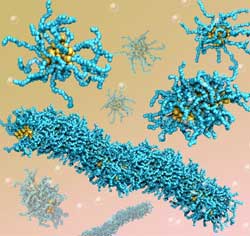
Monday, January 7, 2019
Study shows single atoms can make more efficient catalysts
Quantum scientists demonstrate world-first 3D atomic-scale quantum chip architecture

Researchers discover multilayer band gap in atomic rhenium disulfide layers

Researchers make important discovery for smart films and encapsulation

'Flipped' metal oxide cage can sort CO2 from CO

Machine learning and quantum mechanics team up to understand water at the atomic level

Lotus leaf inspires scientists to create world's first self-cleaning metals

Powerful X-ray beams unlock secrets of nanoscale crystal formation

Subscribe to:
Comments (Atom)
